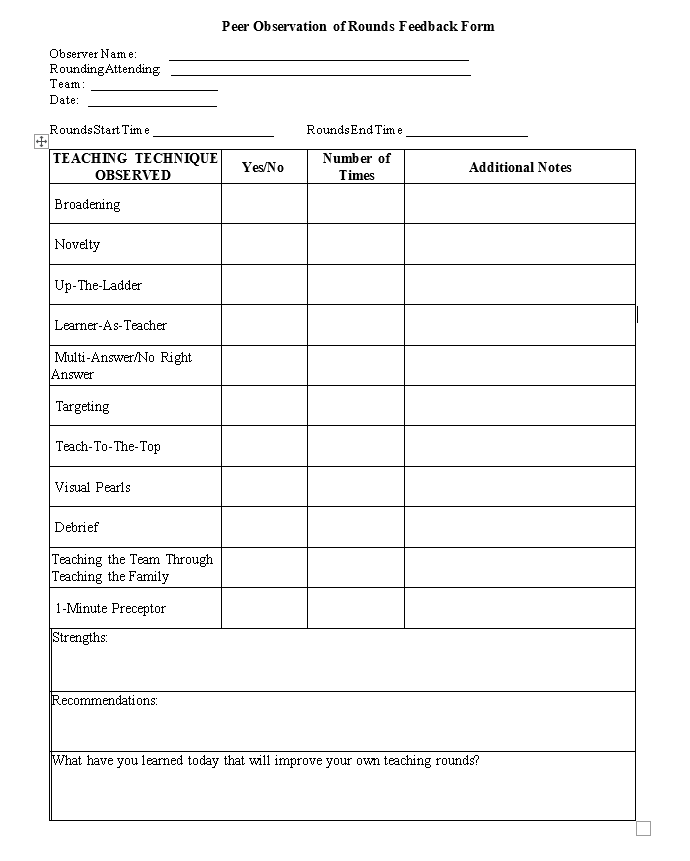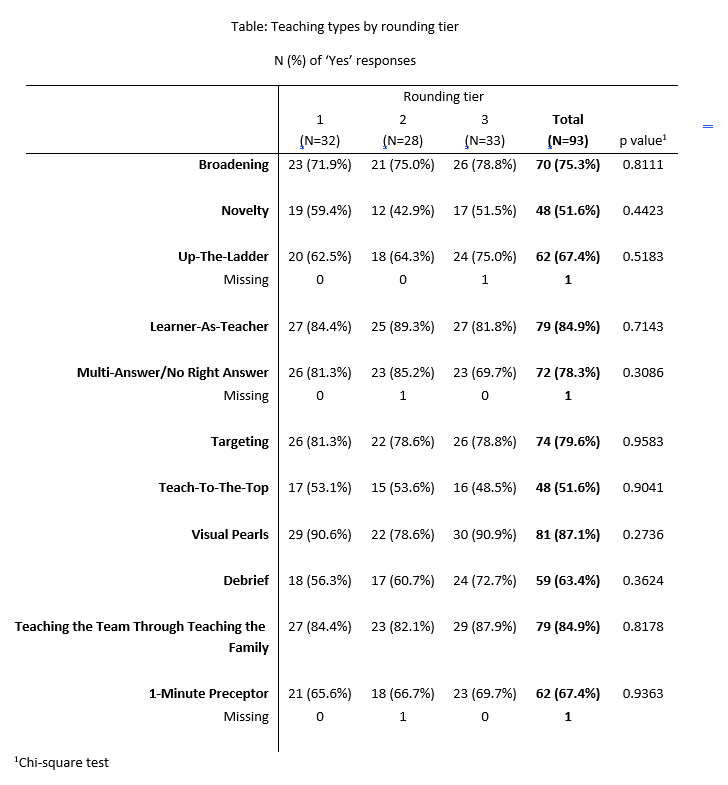Background: Pediatric hospitalists are responsible for educating various levels of learners when overseeing rounds to provide high quality care to patients and families. While many effective teaching techniques are described in the literature, efficient teaching on rounds is a skill not always taught during training. The effective use of these techniques by pediatric hospitalists is difficult to assess, as rounds are typically conducted independently, with feedback only elicited from trainees. Peer observation can be an effective means to evaluate the education provided on rounds. This study aimed to describe and quantify teaching techniques utilized on rounds by pediatric hospitalist and identify differences in practice based on years of experience.
Methods: This prospective observational study was conducted at a tertiary care pediatric hospital between July 2022 and July 2023. All pediatric hospital medicine division members were eligible to participate. The program was voluntary and incentivized. Participants attended a preliminary session to define eleven formal teaching methods. Using a rounds observation guide (Figure), they then observed three occurrences of rounds with a pediatric hospitalist at different levels of experience (Tiers [T] 1, < 6 years post-training; T2, 6-11 years; and T3, >11 years). A post-rounds debrief followed, allowing for immediate feedback about the teaching observed. During observations, the types of teaching methods and the number of times each was utilized were recorded. The guides were then collected, and the data were analyzed utilizing descriptive statistics, Chi Square, and Kruskal Wallis test.
Results: 31 of 48 eligible participants completed the program. 93 observations occurred with 32 in T1, 28 in T2 and 33 in T3. 1777 discrete teaching occurrences were identified with a mean of 20.4 occurrences per rounds observation, and a mean rounding time of 2.6 hours on an average of 14 to 15 patients. Mean occurrences did not vary by tier: T1 20.8, T2 17.8, and T3 22.3, p-value 0.25. Teaching occurrences were then stratified by teaching technique observed. Each teaching type was utilized in > 51% of round occurrences (Table). There was no significant difference in the types of teaching method used when compared by tier of experience (Table). The most common strategies utilized (by % of time used during rounds observations) were Visual Pearls (87.1%), Learner-as-Teacher (84.9%) and Teaching the Team Through Teaching the Family (84.9%) (Table).
Conclusions: Utilizing peer observation, we demonstrated that education by pediatric hospitalists on rounds is both frequent and varied in style. Teaching techniques and number of occurrences did not vary by tier of experience. Techniques incorporating both the family and patient were some of the most commonly used teaching methods. A future direction is to compare the learner experience and identification of teaching methods used on rounds to that of the observing hospitalist.


